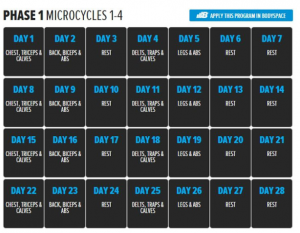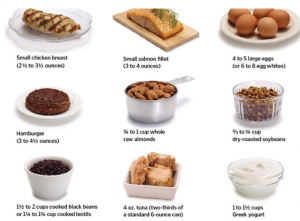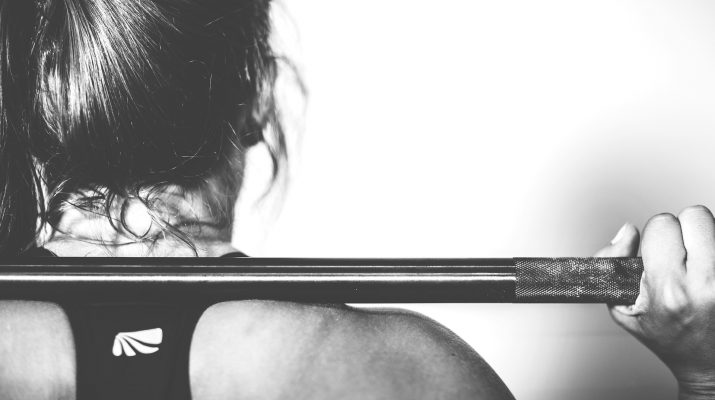I. Introduction
For most climbers, the term “bulking” (gaining weight, particularly lean mass) is uncharted, dangerous territory, as the single most important aspect of the sport is strength-to-weight ratio. However, although climbing when you are super lightweight has its perks and is at times quite fun (particularly the ability to so easily cut your feet and swing them back in and hold onto the tiniest crimps), I personally don’t enjoy being very skinny. For one, it’s not attractive.  It’s always refreshing to see girls (and guys!) with muscular rather than stick-like physiques. More importantly, having a low body fat percentage is not all that healthy (women should try not to fall below 15-25%, men 10-20%), but we as climbers tend to forget that in our never-ending quest to send, send, SEND–just look at 50% of the World Cup boulderers and 75% of the sport climbers! Either way, I decided I wanted a muscular physique over the stick-like frame, and that I needed an off season anyways, after taking no more than a week off (bagel-slicing accident) since I started eight years ago.
It’s always refreshing to see girls (and guys!) with muscular rather than stick-like physiques. More importantly, having a low body fat percentage is not all that healthy (women should try not to fall below 15-25%, men 10-20%), but we as climbers tend to forget that in our never-ending quest to send, send, SEND–just look at 50% of the World Cup boulderers and 75% of the sport climbers! Either way, I decided I wanted a muscular physique over the stick-like frame, and that I needed an off season anyways, after taking no more than a week off (bagel-slicing accident) since I started eight years ago.
Body types, courtesy of MenStyleFashion.com. I happen to be an ectomorph, which means my fast metabolism makes putting on both fat and lean muscle mass somewhat difficult. At the other extreme, endomorphs have a slower metabolism and as a result build mass easily.
II. Procedure
And so, for three months (May through July), I decided to learn the art of weightlifting. More specifically, I followed this program:
Sounds like a real bro gimmick, doesn’t it? But, with the exception of preacher curls, the ridiculous amount of protein consumption (1.5-2.0 g/day), and nowhere near enough ab-work for my personal satisfaction, Dr. Stoppani had a pretty good protocol, particularly for a beginner looking for something equatable to step-by-step instructions.
 The program itself followed a very standard and very much proven protocol of periodization. The entire program (macrocycle) consisted of three identical blocks (mesocycles), each of which was made up of four one-week microcycles. Each mesocycle started off high volume/low intensity and ended in low volume/high intensity:
The program itself followed a very standard and very much proven protocol of periodization. The entire program (macrocycle) consisted of three identical blocks (mesocycles), each of which was made up of four one-week microcycles. Each mesocycle started off high volume/low intensity and ended in low volume/high intensity:
In other words, the number of repetitions varied from week to week: week 1 was always 13-15 rep, week 2: 9-12, week 3: 6-8, week 4: 3-5. And since I didn’t have to do as many repetitions in subsequent weeks, I would naturally increase my work load by 5-15 lbs per week to hit the desired range. Due to both strength gains and neuromuscular adaptations, I was able to lift more weight in the same micro-cycle of each mesocycle.
Drop sets with my bro Min (-:
I also did minimal cardio, of which Dr. Stoppani (and any “bodybuilder” for the matter), makes a very big deal. I will save the reasoning and scientific jargon behind this for a later post, but just keep in mind that if you are trying to build muscle, don’t get on the treadmill, or limit it to a 20-minute HIIT (Hit Intensity Interval Training) workout. More on that in the near future!
In addition to these training guidelines, there were also very specific nutritional guidelines, because it is nearly impossible to get any results without proper fueling. Among these, the following are prioritized:
1) Protein (at least 20 grams) and fast-digesting carbs (white bread, fruit, even candy, to help the protein metabolize faster) are a MUST before and immediately (30-60 min) after a lifting (*cough cough* or climbing) workout.
2) For a bulk, aim for 0.75-1.5 grams of protein per pound of body weight. In other words, if you are a 150 lb male, try to get around 150 g of protein per day. And don’t be afraid to supplement with protein powders, especially whey. They are metabolized faster, which makes them ideal as part of a post-workout meal!
3).That being said, you can’t JUST eat protein. Carbs and fats are also very important! And if your caloric intake is below your daily energy expenditure (estimate yours here), you will NOT make any gains. For tracking macro-nutrients or macros (proteins, carbohydrates, and fats), I used MyFitnessPal, especially at the beginning of the program, when I had no idea how much 20 g of protein or 40 g of carbohydrate was. While at the beginning the whole concept was a bit time-consuming and stressful, it has become very easy and enjoyable, and more of a guideline than anything. Right now, I track about 75% of my meals, and rarely if I’m traveling or eating out, unless it’s a chain like Chipotle that posts their menu online. And that’s the great thing about IIFYM (If It Fits Your Macros)–you can eat some junk food and still hit your macro-nutrient requirements for that day, making it more of a lifestyle than a diet. Because really, who wants to eat chicken and broccoli for every meal?
Sample day of eating where I “hit my macros” and got all my protein from natural sources.
III. Hypothesis
So how exactly does periodization work in helping us gain strength very quickly and overcome plateaus? Well, let’s take a look at the following chart, courtesy of the Resistance Training Specialist RTS Manual:
Without getting too technical, keep in mind that your muscles are made of two types of fibers: slow-twitch and fast-twitch. Let’s think of the slow fibers as the “endurance fibers” and the fast fibers as the “strength fibers”. When more muscle fibers are activated, a greater force is generated. Unfortunately (or not), we are born with an X amount of slow fibers and Y amount of fast fibers. And, since one type of fiber does not magically convert into the other, we are very-much genetically limited, at least in this sense. (This is why elite marathon runners have a relatively high ratio of slow fibers whereas world-class power lifters have more fast fibers.) As such, Strength or Power workouts involve primarily fast fibers while Endurance workouts use both types, since fast fibers must always be activated before slow fibers. By utilizing different repetition ranges (in this case 13-15, 9-12, 6-8, and 3-5), a periodized program is able to target both types of fibers and allows sufficient rest for the fast fibers. As a result, you can increase muscle strength and size while avoiding over-training and plateaus (Kraemer 76).

So as a climber, if you are looking to get stronger without adding mass, stick to the 3-7 rep range and use heavier weights.
IV. Results
Through this program, I gained 18 lbs of muscle and fat (mostly muscle based on skinfold measurements after the first mesocycle, which indicated that I had gained about 6 lbs of muscle and 1 lb of fat). Put simply, the program accomplished the initial goal of bulking. See for yourself:
 High contrast photo to emphasize back bulges (-:
High contrast photo to emphasize back bulges (-:
For those of you who are also big numbers nerds like myself, here is a graphical depiction, courtesy of
MyFitnessPal:
I’m still very lean, but this is definitely a huge step up from before. I will probably continue to bulk for a while, though on my own program (now that I have a good concept of the various exercises for each muscle group), then maybe do a mini-cut for a few weeks, just to be able to really see the gains I have made. Regardless, I will post any updates on this blog.
So the critical question then becomes, what effect did this have on my climbing?
Unfortunately, this is nearly impossible to judge. Because these workouts were so time-consuming and it was my intention to take a break from climbing, my days at Prime Climb and City Rock decreased to about once every one or two weeks. Naturally, I lost a good amount of forearm and finger strength, since you don’t generally use those muscles for normal day-to-day activities. However, my foot cuts stayed pretty much the same thanks to biweekly core work, while my power improved significantly. The bottom line is, I didn’t wake up at the end of this unable to climb anything. After a couple weeks of getting back into it (climbing maybe twice a week), I am now back to a V7-V8 level. And who knows what the results would have been had I been climbing consistently throughout the bulk.
V. Conclusion
A few last bullet points to sum everything up:
Dr. Stoppani’s “Shortcut to Size” is a very neat and concise program with lots of cool hybrid exercises, such as these Smith machine hip thrusts:
However, you still have to be highly critical of every exercise and every nutritional and training guideline! Don’t be lazy, do the research.
Likewise, both MyFitnessPal and BodyBuilding.com are great resources for anyone looking for advice/ideas on nutrition, exercises, structured workouts, and pretty much anything health- or fitness-related. Just because you’re a climber, doesn’t mean all your sources have to be climbing-specific! In fact, non-climbing-specific sources tend to be more reliable and backed by scientific studies.
Your climbing won’t suck if you gain a couple pounds. That being said, going through cutting and bulking phases can be very beneficial for a climber prepping for a trip or a competition. In other words, keep that training weight on as long as possible, cut down a month or so before the trip, then put the weight on immediately after the trip (though be careful making any drastic, 300+ calorie changes, as that may slow your metabolism and cause you to keep the weight on or speed it up and cause you to keep the weight off). Is this the healthiest option? Definitely not, but still better than hovering at that single-digit body fat all year round.
Lifting is fun and I will definitely stick to it even though the program is done. I never thought I’d live to hear myself say, “Wow, that was such a good benching sesh” or, God forbid, anything vaguely positive related to leg day. Yet, here I am, having a blast doing front squats. On top of that, resistance training is necessary. Muscle-wise, climbers tend to be extremely unbalanced and constantly dealing with injuries. Yet all this is easily avoidable with a couple hours each week dedicated to antagonistic muscles, with exercises such as the shoulder press, chest press, and tricep work. Also, let’s not entirely disregard legs, those are kinda important, especially as you get older and your muscles start to atrophy.
I learned so much just from doing this program. Lifting, nutrition, body building, power lifting, antagonistic work, how awful dips are for your arms, how awful preacher curls are for your biceps, etcetera! Don’t let climbing be the end-all. You won’t die from taking a small break and trying something new. On contrary, it will probably help heal those overuse injuries. Personally, I came out of this with a new-found appreciation for climbing, feeling as though I had fallen in love with the sport all over again.
And I did manage to get outside (-:
Thanks for reading!


